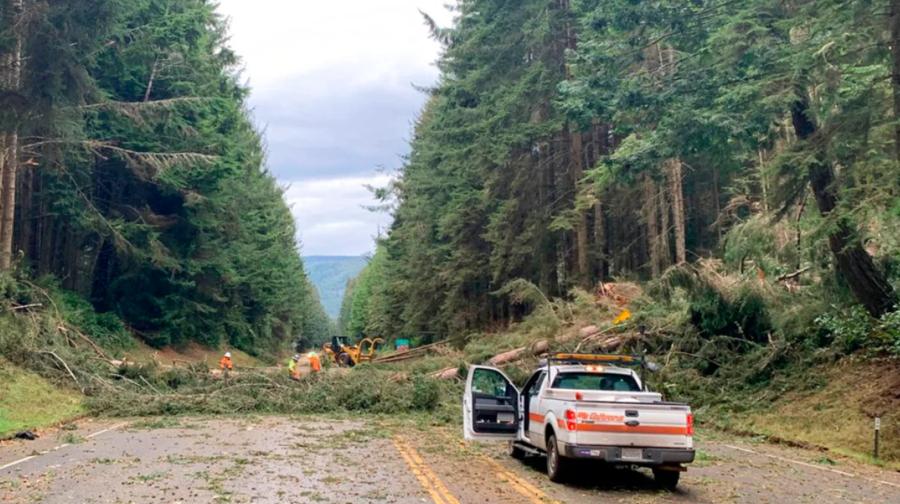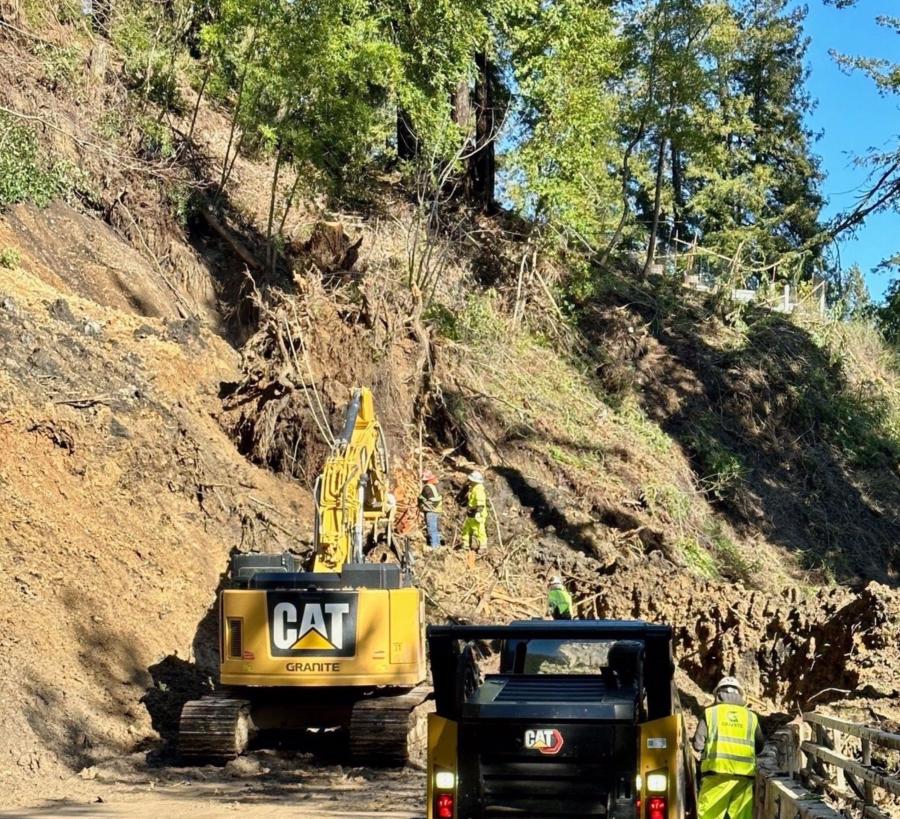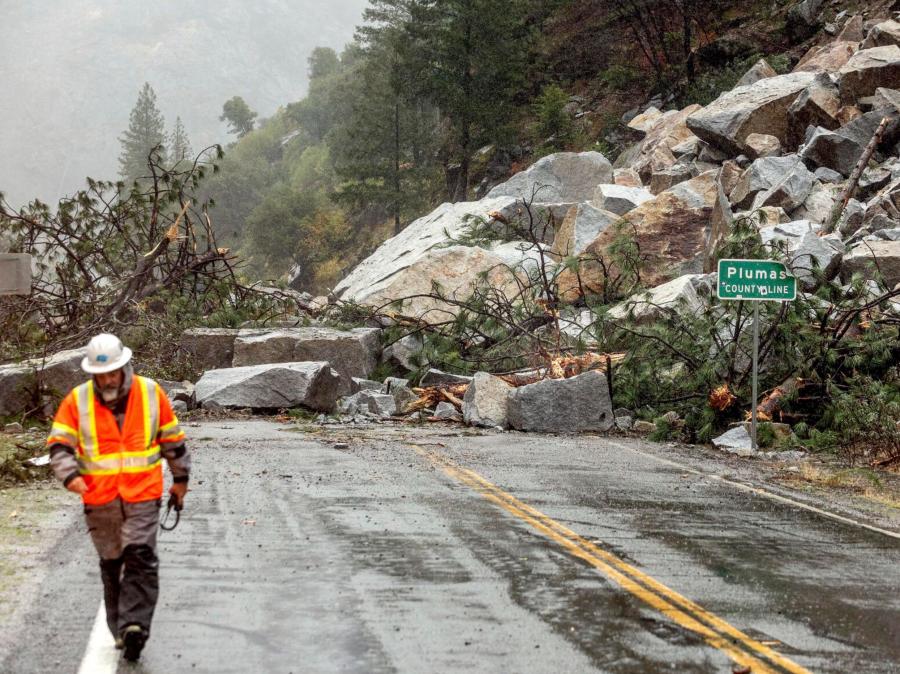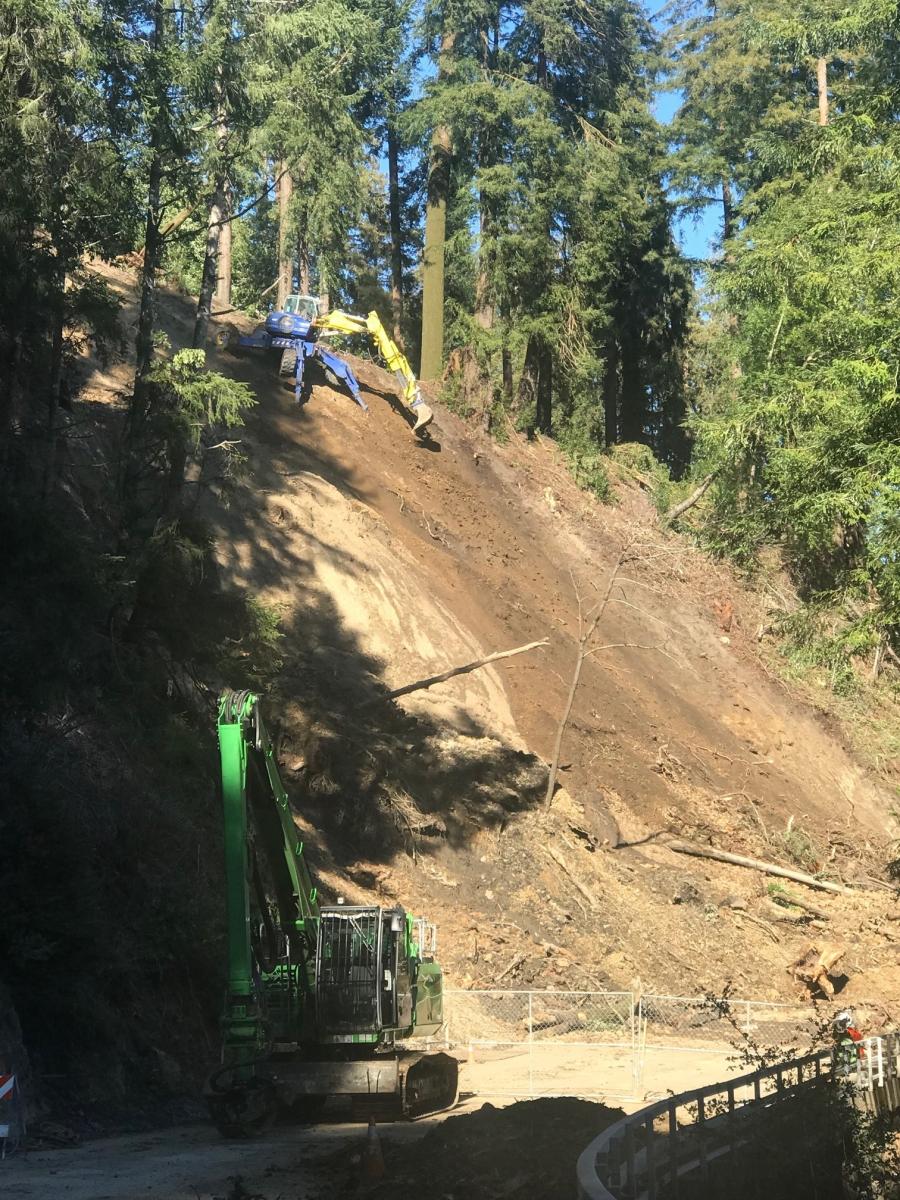Granite Construction was tapped to help repair approximately $300 million in damage caused by massive storms, also knows as a “bomb cyclone,” that ravaged California.
(Granite photo)
The heavy rains and strong winds that struck California in January, dubbed "bomb cyclones," caused severe devastation in many parts of the state, taking lives and destroying and damaging homes and businesses. The storm also directly impacted the California Department of Transportation's (Caltrans) highway and bridge network and many local roads and bridges.
So much water came down that levees in Monterey County were unable to hold back the water and several collapsed. According to the National Weather Service, areas around the state received between 11 to 47 in. of rainfall and up to 240 in. of snow was received at higher elevations over a one calendar month period.
According to Moody's RMS, the storms caused between $5 billion to $7 billion in economic damage via the flooding.
Will Arnold, media relations manager of Caltrans HQ, provided an assessment of the situation, stressing that agency was prepared to handle the emergency and whatever Mother Nature could give.
"Caltrans' maintenance upkeep and designed resiliency measures helped minimize damage costs," he said. "Compared to the extreme storm event of 2017, which resulted in $1 billion in damages, the total damage costs throughout the state for the January storm events are estimated at approximately $300 million. In this most recent storm, Caltrans incurred about $23 million of damage to the State Highway System [SHS] pavement, most of which consisted of potholes on about 50 lane miles statewide."
Most of the damage experienced on state highways, noted Arnold, can be classified as washouts due to the extraordinary rainfall and runoff, as well as slides/slipouts due to over saturation of soils.
The breakdown of damage is broken down into the following categories:
- Slides/slipouts: 45 percent;
- Culverts: 11 percent;
- Drainage: 10 percent;
- Debris removal: 8 percent;
- Tree removal: 3 percent;
- Other/combinations: 23 percent.
One of the general contractors brought in to conduct emergency work is Granite Construction, which has crews operating in several areas engaged in removing earth and rock from mudslides, removing trees and other debris. The company has done a fair amount of emergency work and leans on its prior experience in previous operations following disasters.
"We had work all over the major roadways in the Santa Cruz mountains," said Project Manager Tony Torres. "CA-17 southbound had a 400 cubic yard slide we cleared and we've cleared a 3,500 cubic yard slide a little south of Ben Lomond on CA-9. Down the hill, we've been clearing woody debris from the San Lorenzo River Bridge on CA-1 in Santa Cruz."

However, the emergency work is not limited to the Santa Cruz area and Granite has been called on by numerous agencies in the areas hardest hit for emergency response. In the Salinas Valley, Granite crews inspected bridges to assess storm damage; in Carmel Valley, crews cleared a landslide; in Carmel-by-the-Sea, Granite crews assessed impacts to a sewer line and potential road subsidence onto the beach. In Santa Barbara and San Luis Obispo counties, crews helped clear roadways, creeks and storm basins of debris. Near Fresno County, crews were dispatched to CA-198 near Coalinga to clear mud and rockslides and repair failed slopes, guard railing and portions of the roadway.
Construction Manager Brian Hussar discussed how important safety is during these operations.
"Working in extreme weather events creates special safety considerations and our teams are skilled at recognizing and mitigating hazards and at communicating those hazards to our clients," Hussar said. "Mobilized teams follow daily safety protocols like they would at any other job, though the Take-5 might be a lot longer than five minutes in these cases."
Other emergency work in response to the current storms includes setting K-rail at two failing highway shoulders, placing sandbags and plastic on various slide areas, and clearing numerous small slides and debris.
"Our Monterey Bay branch has six separate clients we have been or will be performing emergency work for," he said. "In some cases, we had up to eight separate operations going on for various clients. In terms of timing, this year we have responded in as little as 24 hours in certain cases. More typically, we can respond with crews on the ground in three-to-five days. We ask our clients how soon they need us to respond. Usually, when they call us, they are still assessing their situation and coming up with a plan. Emergency work has required all of our signatory trades, laborers, operators, masons, carpenters and teamsters."
Equipment In Use
Typical emergency work, said Fogg, uses excavators (Cat 315, 335, 325 and 336 models), front end loaders (Cat 950 and 966 models), skip loaders, backhoes (John Deere 410 and 710 models), and forklifts (Cat 1255 and 1055 models). Some specialty work was performed by tree subcontractors and limited access contractors, who used Menzi Muck ("spider") excavators.
Crews are mainly engaged in day operations.
"Critical work dealing with arterial roadways was performed 24/7," said Fogg
Asked what are some of the particular dangers that crews have to deal with, Fogg replied, "Active slides, down power lines, lighting, slips, poor access on roads, limited access, falling trees, backing equipment, unsteady loads, uneven surfaces and fatigue."
Previous emergency work operations have honed the skills of the crews and Granite managers.
"We are able to respond in the way that we do because crews are getting better at it," said Fogg. "Field crews take the initiative to actively plan work and keep our clients happy, while communicating to project management. The efforts of the crews are monumental and top tier."
The amounts of earth and rock being removed continues to grow.
"The scale of removal is in the tens of thousands of cubic yards range," said Fogg. "Typically, the material is going to dump sites owned by the respective client. Some material is taken to temporary stockpiles. Disposal locations include shoulders, ramp islands, landfills and private ranches. Some trees are cut and left to a local private owner to use as lumber if they choose. Most wood debris is mulched and spread in respective stockpile yards. Wood waste, due to chemical treatment, typically goes to a landfill."
In terms of road and bridge work, Fogg added, "Mostly roads being re-built. Typical operation is to ensure the water source that caused the damage has ceased or has been diverted. We excavate out damage and reach competent material. We backfill with select fill, then install some level of slope protection [jute netting, gabion stone, or riprap]. As needed, we replace drain culverts, then pave road back. Sometimes we add curbing that will help channel water in the future. A good portion of the work is reimbursed by FEMA — their requirement limits work to replace in kind."
Fogg noted that relations with Caltrans and other authorities is good.
"They are able to call on us and we are able to respond," he said. "We also are able to collaborate on means/methods or repair plans."
Granite also provided an update via a statement.
"As most of you know, California started 2023 with disaster," Granite said in a statement. "Historic rains, winds and waves, driven by a powerful series of atmospheric rivers, battered homes and infrastructure. Throughout California's central coast, the transportation network faced a series of emergencies related to flooding, landslides and falling trees. The coastal ranges of northern California were heavily impacted by the extreme weather, threatening to cut residents off from essential services; in areas of southern California extreme flooding turned roads to rivers, with some residents taking to kayaks to escape; and across the entire state the intense storms caused major damage to infrastructure. In response to the disaster, Granite has been tapped to perform varied emergency work in the aftermath of the epic New Year's storms."
Most of the damages manifested as slides and culvert/drainage failure on roads, causing road and lane closures, according to Arnold.
"Statewide, Alameda County had the most damage sites reported [approximately 8 percent of total sites] and Los Angeles County has the most monetary damage [approximately 13 percent of the total damage cost]. The hardest hit areas for Caltrans infrastructure were the Southern [23 percent of total cost reported] and Mid [50 percent of total cost reported] highway portions of the state."
Caltrans was on top of the situation the moment the rains began.
"Emergency repair contracts were initiated immediately as soon as we could safely access the damage sites, often during the storm itself," said Arnold. "Some damages are still being assessed. One area, State Route 1 along Big Sur in Monterey and San Luis Obispo counties, is being broken up into segments to speed up the reopening to traffic.
"Prior to every rainy season, Caltrans conducts statewide training and exercises to be ready to respond and recover from damaging storm events," he added. "Caltrans will preposition staff and resources as needed in advance of a forecasted severe storm. The department has specialized damage assessment teams throughout the state ready to respond. During the storms, damage assessment begins once teams can safely access the sites. Caltrans has an emergency contracting processes that allows us to begin repairs within hours."
Granite has an extensive history of responding to disasters in the Golden State. In recent years, these have included a March 2022 landslide near Lake Tahoe; wildfire response in 2020 and 2021; the 2018 Montecito debris flow; and storm response in 2017. Granite Vice President Brent Fogg is helping to oversee emergency operations. CEG
Today's top stories

























